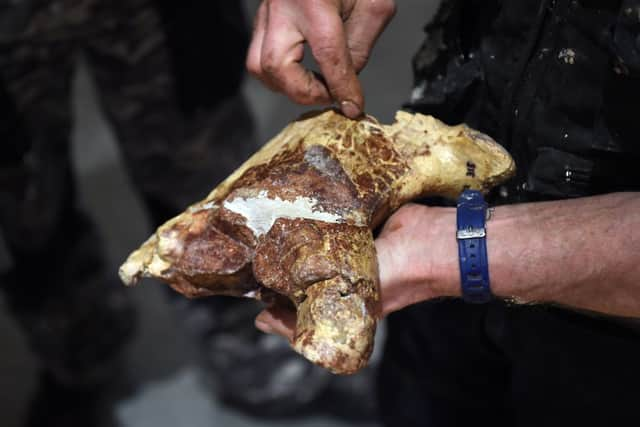Pterodactyl ancestor confirmed among 'Elgin Reptiles' fossils discovered in Scotland 100 years ago
and live on Freeview channel 276
Palaeontologists in Scotland have recently analysed a dinosaur skeleton reported to be over 230 million years old.
Using X-rays, they were able to put together a digital recreation of the dinosaur’s skeletal construction, enabling them to study it much more accurately.
Advertisement
Hide AdAdvertisement
Hide AdThe skeleton is that of a Scleromochlus - it was first dug up over 100 years ago and it belongs to a group of fossils coined the “Elgin Reptiles”, named in 1907 by Arthur Smith Woodward.
Scleromochus was encased in sandstone for over a century, with scientists unable to dig into it any further as they risked causing damage to the fossil.
The dinosaur was thought to have been around seven inches in length, preying on small insects and reptiles.
For comparison, a Tyrannosaurus Rex was believed to have grown to up to 12.4 metres in length - making it well over a thousand times larger than a Scleromochus.


Advertisement
Hide AdAdvertisement
Hide AdAlong with revealing the creature’s species, it has also been confirmed as an ancestor of the more famous Pterodactylus - more commonly known as a Pterodactyl.
Pterodactylus was the first pterosaur to be dug up and reconstructed back in the 1800s - it has also featured in several TV shows and films, such as Jurassic Park and Primeval.
The Scleromochlus is determined to have lived during the Triassic period, when the Earth’s landmasses were all connected together as one supercontinent - Pangaea.
While the dinosaur isn’t thought to have flown, it may provide insight into the evolutionary process that pterosaurs went through in developing their wings and limited flight capabilities.
Comment Guidelines
National World encourages reader discussion on our stories. User feedback, insights and back-and-forth exchanges add a rich layer of context to reporting. Please review our Community Guidelines before commenting.